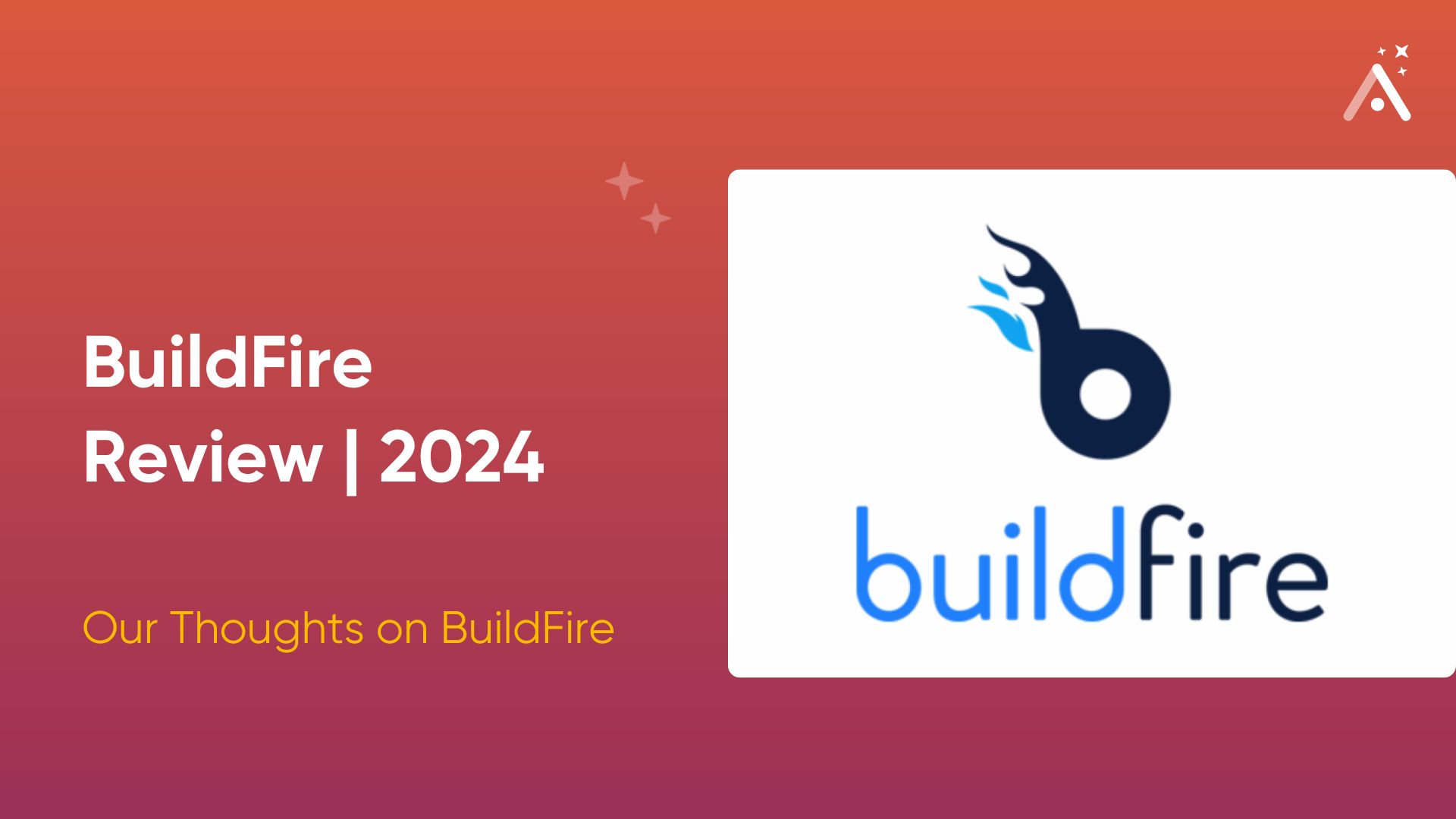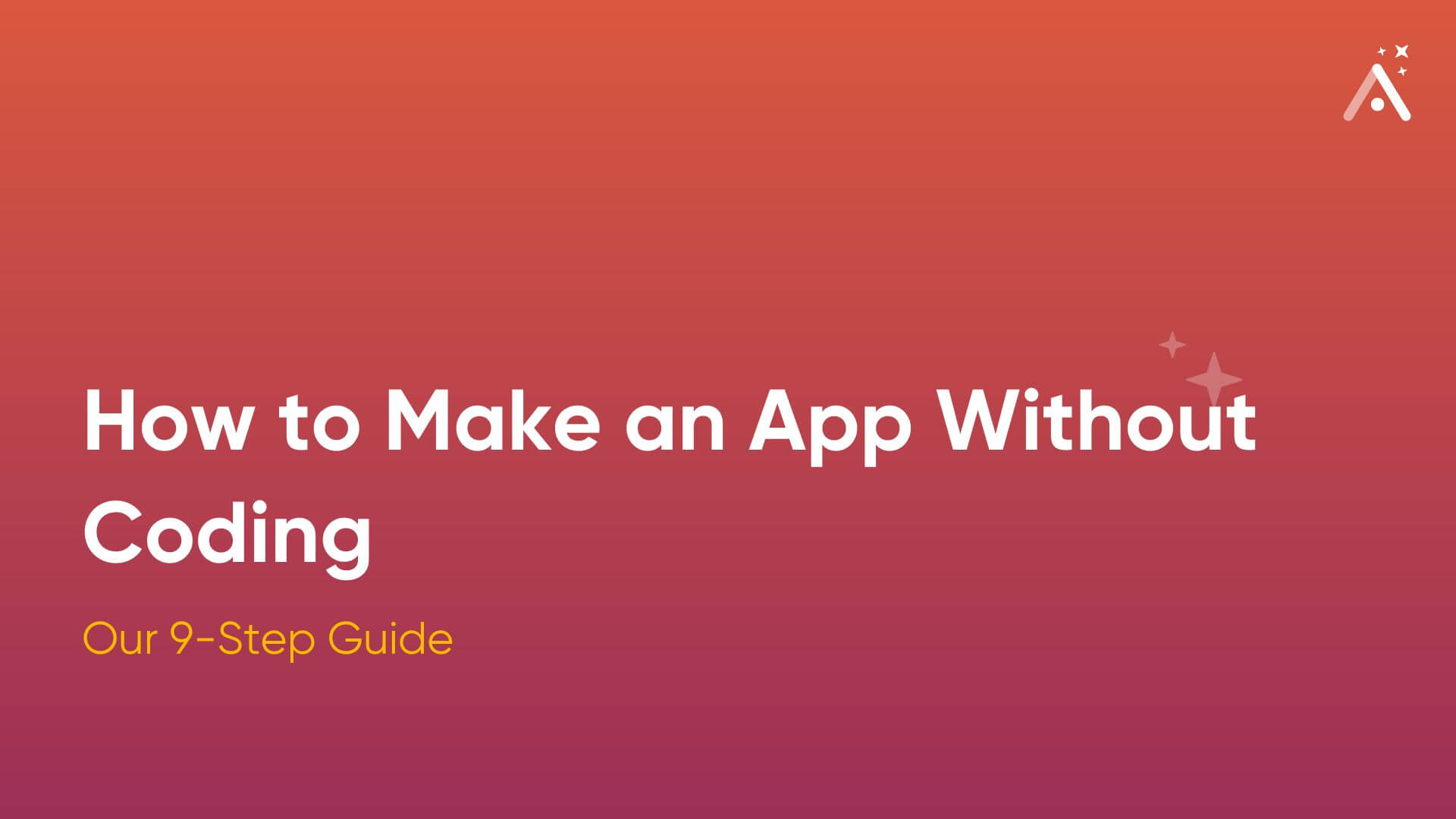The Bottom Line: BuildFire is an intuitive, easy-to-use, no-code web and mobile app builder that allows for a fair amount of design freedom. However, its design interface comes with limitations, and pricing is exceptionally expensive.

Pros:
- Easy-to-learn point-and-click interface.
- Builds iOS and Android mobile apps that you can publish in app stores.
- Comes with access to over 100 3rd-party plugins.
Cons:
- BuildFire’s interface looks dated, and while it’s simple, it’s limited in use.
- Many premade features that BuildFire provides appear bland.
- BuildFire is very expensive - its cheapest version is $100/month.
Pricing:
BuildFire features a 14-day free trial but no free version - and you don’t have to enter any credit card information. The cheapest version is $100/month, billed annually and monthly.
If you want to have more than 100 downloads of your app, you’ll have to pay $159/month, billed annually.

What is BuildFire?
BuildFire is a no-code web app and native mobile app builder featuring a low-learning curve building interface that allows for enough design freedom to customize your app to your liking.
When you sign up with BuildFire, you’ll choose an app type from 22 options. These cover popular industries like travel, delivery, e-commerce, and more. After picking your industry, BuildFire provides you with about 12 premade templates for that industry.
The templates are surprisingly sleek, given the dated look of BuildFire’s dashboard.
BuildFire will also give you the convenient option to use its AI tool to generate a custom template for your app. Just type in a prompt explaining what jobs you want your app to execute and if you need any special features.
You’ll also be able to custom-select the features you want to include in your AI-generated template. Delete any features you don’t want, then add a more granular description of your desired features in a final prompt. The AI will then fine-tune your template and load it with the features you asked for.
After you’ve got your template sorted, BuildFire will bring you to its dashboard. Here, you’ll find suggested features and plugins made by the BuildFire community that you can add to your app.
These features and plugins will enhance your app’s functionality. BuildFire has well over 100, but here are just a few that you can select:
- A weather plugin for real-time weather updates.
- A reactions plugin that lets users comment on articles, pictures, or other content.
- A mortgage estimator for all the real-estate app builders out there.
- A PDF editor that also allows users to make signatures.
- An e-reader that allows for in-app purchases so you can sell ebooks on your app.
- A Stripe checkout plugin to take payments for your e-commerce products.
BuildFire lets you know when each 3rd-party plugin was last updated. At the time of this writing, the last update time of some 3rd-party BuildFire APIs was 5 years ago. So, expect a few buggy plugins.
While BuildFire’s building interface doesn’t have the greatest appearance, it’s one of the easier no-code mobile app builders to learn, and it allows for a decent amount of design freedom. You can build out your app’s components on each screen using a text box that resembles a blank Google document.
Add headings, text, pictures, videos, and more to feature on each app screen. On the right-hand side of BuildFire’s building interface, you’ll find a very useful feature: a smartphone screen that shows how your mobile app will appear to users.
BuildFire’s app-building interface doesn’t have a very fast response time, so you might have to wait a few seconds to see how your design will appear to users. Positioning your app’s components to where you want them on the screen can be tedious, as you’ll press your keyboard’s “enter” and “delete” keys to adjust. These hangups can slow you down when building your app.
While BuildFire has a resource center full of webinars, articles, and other tutorials, it doesn’t have a community ecosystem that you can leverage to answer specialized questions. If you need company support, BuildFire does provide live chat support, but it’s not available 24/7.

Is BuildFire Right For You?
While BuildFire is an app builder with a very low learning curve, it has some drawbacks that limit its audience. Select BuildFire if:
- You want an app builder that’s fairly intuitive with a low learning curve that you can use right after you sign up.
- You want to publish your app in the Apple App Store and Google Play Store.
- You have a simple app idea, and you know exactly how you want it to appear and function.
However, you should take a look at other app builders if:
- You’re on a budget - or you simply just don’t want to spend $100/month to publish your app to an app store and have a low number of downloads available.
- You want a more extensive selection of design options that you can use to beautify your app.
- You want an app builder with a thriving ecosystem and a message board that allows you to connect with experts and hobbyists who know your app-building platform inside out - and are willing to help.
What Kinds of Apps Can You Build With BuildFire?
Since it hit the market several years ago, users have leveraged BuildFire to create over 10,000 apps. BuildFire claims that there’s basically no app (aside from a game or an augmented reality app) that you can’t build using its platform.
The flexibility of BuildFire’s app-building interface, combined with its huge selection of 3rd-party plugins, makes it possible to build everything from restaurant apps, e-commerce apps, event apps, and many, many more.
One of BuildFire’s most compelling features is that you can use it to build both progressive web apps (PWAs) and native mobile apps. PWAs are apps that function just like the native mobile apps that you download on your phone, but you access PWAs on the internet using a browser.
When you build native mobile apps for both iOS and Android, BuildFire lets you publish them to the Apple App Store or the Google Play Store. As a bonus, BuildFire will help you navigate each app store’s painstaking submission process.
BuildFire Pricing: Is it worth it?
Out of the vast majority of builders available, BuildFire by far has the most eye-watering prices. Many looking to build their first app will see this as the main reason to seek alternatives.
First, BuildFire does have a free trial. While you don’t have to give credit card information to activate your free trial, it only lasts for 14 days.
Then, you must pay for the MVP version (the startup version of your app - basically a prototype), which is $100/month. This only gets access to a limited number of BuildFire’s 3rd party plugins and 100 combined downloads from the Apple App Store or Google Play Store.
BuildFire’s next pricing plan, the Growth Version at $159/month (billed annually), differs from the MVP version in only one significant regard: It allows for unlimited downloads of your native mobile app from the Apple App Store or Google Play Store. Keep in mind that BuildFire still locks you out of the same 3rd-party plugins that are prohibited in the MVP version.
Here are just some 3rd party plugins you won’t be able to access with BuildFire’s MVP and Growth Versions:
- Drip notifications
- QR scanner
- On-the-Go Push notifications
- Menu order system
- Task manager
Because the Growth Version is much more expensive and significantly less powerful than other options, it’s a better idea to look elsewhere when creating your app’s startup version.
While BuildFire does allow you to pay for a quarterly subscription for the Growth Version at $189/month, that’s still nearly $570 for only three months of use. BuildFire’s basic versions are very heavy on the bank account but light on functionality.
If you want your app to do more, you’ll need to go with BuildFire’s Start Version at $299/month (billed annually). It unlocks those 3rd party plugins unavailable in the MVP and Growth Plans, and it also gets you a Zapier integration, so you can connect your app to other software programs.
BuildFire’s most expensive option, the Standard Version, clocks in at $424/month (billed annually). This will give you enterprise-grade features, like enterprise-level app deployment.
Need to save time and money’s not an object? BuildFire offers customers the option of having their app professionally made by BuildFire’s design team. After a consultation, you’ll have the following options:
- A simple app idea (up to 15 screens) for $5,000.
- Up to 25 screens and a Zapier integration for $7,500.
- No more than 50 screens, with promotional videos and app-store screenshots for $15,000.
BuildFire alternatives: What Other Tools Should You Try?
If you’re looking for a BuildFire alternative that’s nicer to your bank account and gives you more power, I recommend trying out the following:
- Adalo, a cheaper, more powerful native mobile app builder that features a drag-and-drop interface which is more intuitive than BuildFire’s.
- GoodBarber, features a similar building interface but is much cheaper than BuildFire.
- Glide, a great option for medium to large-sized businesses, gives you more power than BuildFire and is cheaper.
Verdict
So, what’s my final opinion on BuildFire? Should you avoid it, shortlist it, or sign up now?
Sign up now if you’ve got a huge budget and want to use a low-learning curve app builder. I strongly recommend you go for BuildFire’s Growth Version, at $159/month, because you’ll be able to publish it on the Apple App Store and Google Play Store with unlimited download potential.
Shortlist BuildFire if:
- You want an easy app builder, but you’re still not sure how you want your app to look.
- Money’s not an issue for the Growth Version, or you’re sure that you can convince the procurement department to spend at least $567 for BuildFire’s quarterly growth version.
- You’re OK with BuildFire’s limited design aesthetics.
I recommend trying out BuildFire’s 14-day free trial, but you should also be using other free versions at the same time. Doing this will give you a good idea of which building interface you like more, and what features are more important to you.
If you want an app builder that’s less than half the cost of BuildFire and much more powerful, give Adalo a try. Adalo gives you full design freedom, without sacrificing power and functionality, to create a native mobile app that you can publish in the Apple App Store or Google Play store - at a much lower price than BuildFire.
















